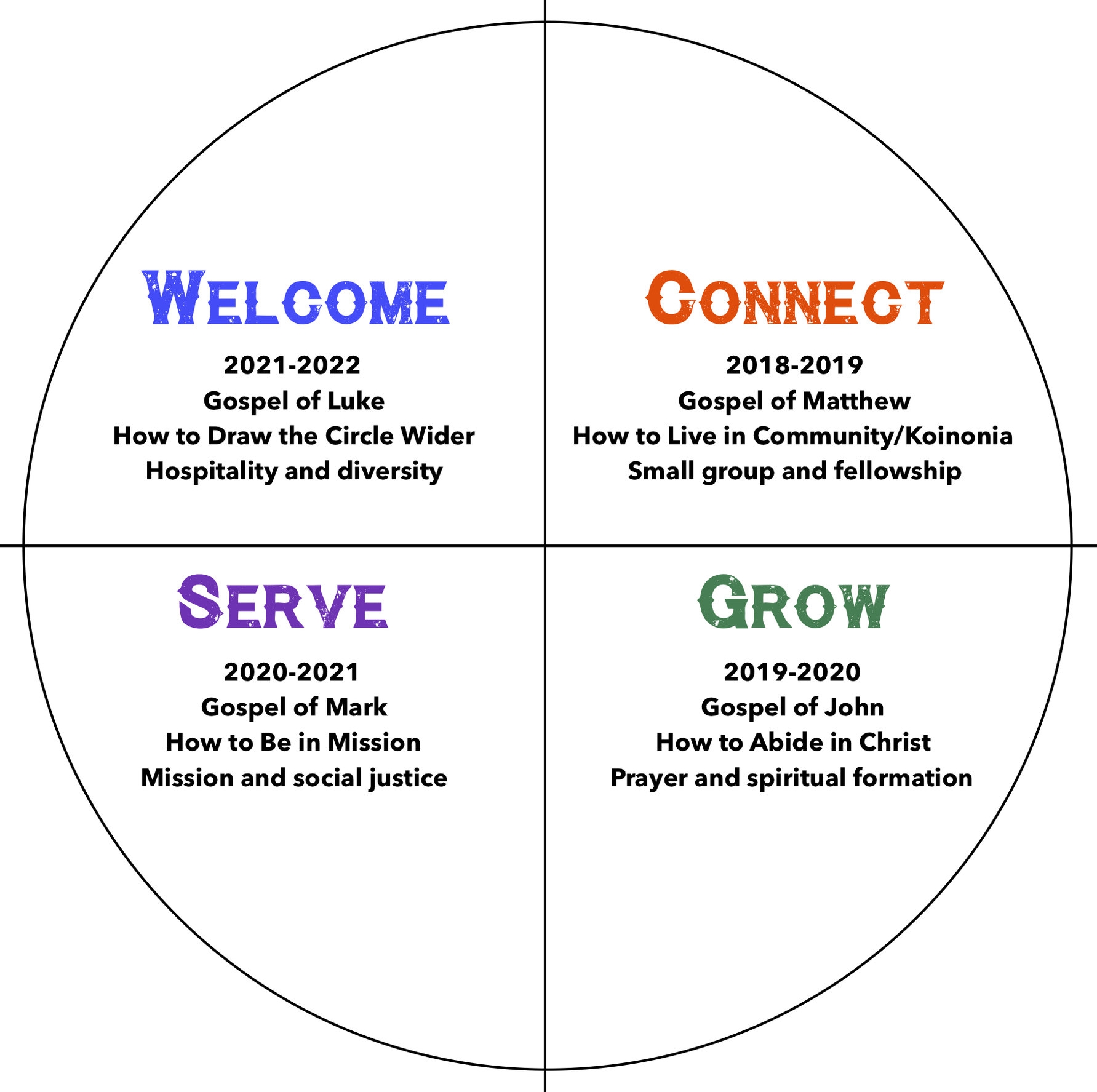The Shape of Our Lives
/I love the KPUMC sanctuary for many reasons, but my favorite feature of our worship space is its cruciform shape, meaning the ground plan is in the shape of a cross.
While it is common for Catholic and Anglican/Episcopalian churches to be built in this shape, it’s rare in the United Methodist denomination, particularly in the south.
The shape of our church is not just an architectural feature; it’s not only a nod to the most recognizable symbol of Christianity.
It also makes a statement about the shape of our lives together — the life of a Christian disciple is supposed to be cruciform.
What does that mean?
This is metaphorical language, of course. But it means that, in some sense, as we follow Jesus, we will also experience suffering and crucifixion. Our lives will mirror Jesus’ life; the contours of our faith journey will resemble the ebb and flow of Christ’s journey.
Jesus himself mentioned this when he said, “All who want to come after me must say no to themselves, take up their cross, and follow me.” Obviously, Jesus didn’t mean that we should all be dragging wooden crosses behind us everywhere we go; he meant instead that the experience of following him involved hard choices and difficult challenges. There is a necessary struggle that we must each embrace if we are going to be God’s people in the world.
I reflected on this truth as I walked the Stations of the Cross in our sanctuary this week. The Stations of the Cross are a cruciform spiritual discipline; not only do we literally walk in the shape of the cross while meditating and praying, but we read through the story of Jesus’ arrest, trial, torture, and crucifixion as we go.
We don’t do this only to commemorate or remember what Jesus went through; we do this because we are called to a life which will resemble his.
This doesn’t necessarily mean our individual lives will resemble each other’s, or that we are called to the same kind of choices in life. To paraphrase the opening lines of Tolstoy’s Anna Karenina, “Each cruciform disciple is cruciform in its own way.”
“Taking up the cross” will mean one thing for me, and another thing for you . “Saying no to yourself” will challenge my behavior in a certain way, but perhaps another way for you.
Lent is a season in which we must check ourselves and ask if our lives are actually cruciform, or whether they take a different shape. What about you?




